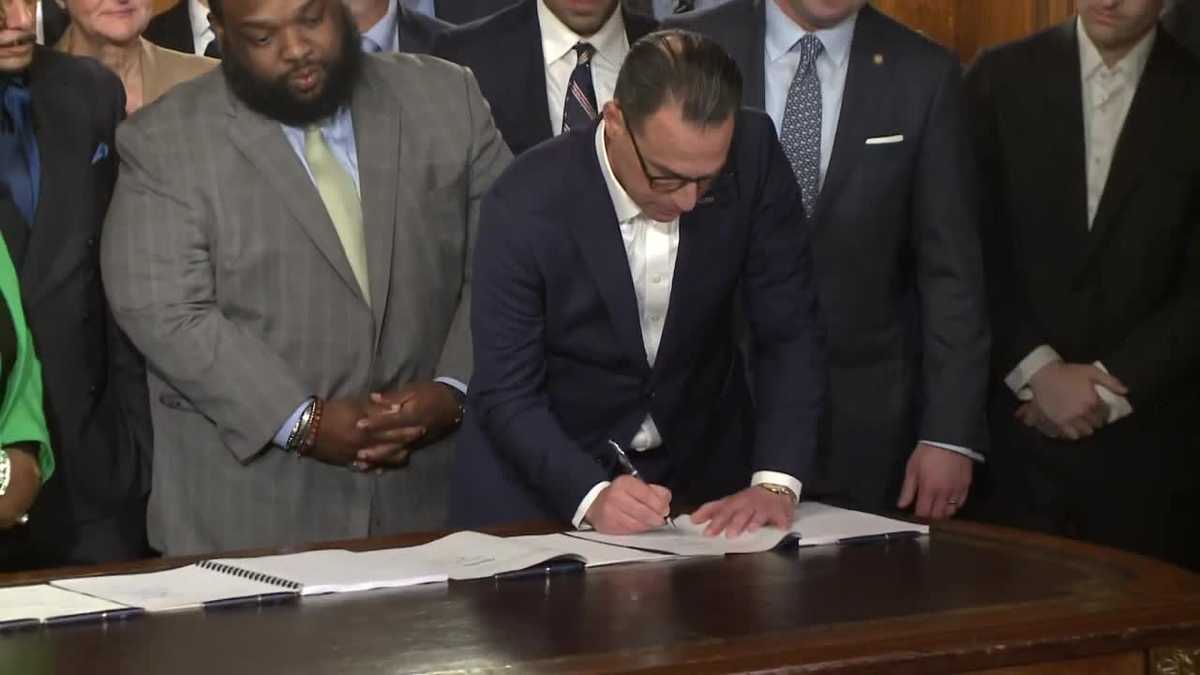Pennsylvania Gov. Josh Shapiro signed a $50.1 billion spending plan Wednesday afternoon, more than 130 days after the budget deadline.Shapiro said Pennsylvania is just one of three states in the nation with a divided legislature and it took compromise to get a budget to his desk. Shapiro said the spending plan is a balanced budget without any tax increases that still keeps hundreds of millions of dollars in reserve.Note: This article is being updated with new information. We will also post the governor’s full remarks as soon as they are available.House, Senate votesHOUSE VOTE | 156-47 (Roll call)SENATE VOTE | 40-9 (Roll call)Spending up more than $2 billion The budget represents an increase of $2.27 billion from last year, or 5%. Practically all of the overall spending increase goes toward Medicaid and public schools.Democrats don’t get the amount of money that Shapiro originally sought in his initial budget proposal, but the deal — after weeks of closed-door negotiations — delivers substantial new sums to public schools and an earned income tax credit for lower earners, as Democrats had sought.The deal was facilitated by concessions from House Democrats on the Regional Greenhouse Gas Initiative. The agreement to back off the carbon dioxide cap-and-trade program on power plants comes six years after then-Gov. Tom Wolf made joining the Regional Greenhouse Gas Initiative the centerpiece of his plan to fight climate change.The plan made Pennsylvania — the nation’s second-largest natural gas producer — the only major fossil fuel-producing state to undertake a carbon cap-and-trade program. It has been held up in court and never went into effect.It was popular with environmental groups and renewable energy advocates, but it was opposed by Republicans, fossil fuel interests and the labor unions that work on pipelines, refineries and power plants.The budget plan leaves the state with roughly $200 million in reserves while keeping the rainy day fund untouched. It includes $565 million in adequacy and tax equity funding for schools in need, as part of an effort to meet a court ruling on school funding.Note: The Associated Press contributed to this report.
Pennsylvania Gov. Josh Shapiro signed a $50.1 billion spending plan Wednesday afternoon, more than 130 days after the budget deadline.
Shapiro said Pennsylvania is just one of three states in the nation with a divided legislature and it took compromise to get a budget to his desk.
Shapiro said the spending plan is a balanced budget without any tax increases that still keeps hundreds of millions of dollars in reserve.
Note: This article is being updated with new information. We will also post the governor’s full remarks as soon as they are available.
House, Senate votes
Spending up more than $2 billion
The budget represents an increase of $2.27 billion from last year, or 5%. Practically all of the overall spending increase goes toward Medicaid and public schools.
Democrats don’t get the amount of money that Shapiro originally sought in his initial budget proposal, but the deal — after weeks of closed-door negotiations — delivers substantial new sums to public schools and an earned income tax credit for lower earners, as Democrats had sought.
The deal was facilitated by concessions from House Democrats on the Regional Greenhouse Gas Initiative. The agreement to back off the carbon dioxide cap-and-trade program on power plants comes six years after then-Gov. Tom Wolf made joining the Regional Greenhouse Gas Initiative the centerpiece of his plan to fight climate change.
The plan made Pennsylvania — the nation’s second-largest natural gas producer — the only major fossil fuel-producing state to undertake a carbon cap-and-trade program. It has been held up in court and never went into effect.
It was popular with environmental groups and renewable energy advocates, but it was opposed by Republicans, fossil fuel interests and the labor unions that work on pipelines, refineries and power plants.
The budget plan leaves the state with roughly $200 million in reserves while keeping the rainy day fund untouched. It includes $565 million in adequacy and tax equity funding for schools in need, as part of an effort to meet a court ruling on school funding.
Note: The Associated Press contributed to this report.

